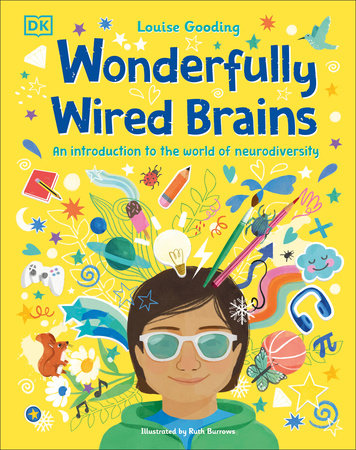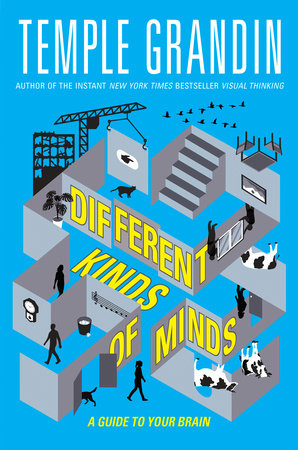You explore a variety of aspects of mental illness, and specifically, bipolar disorder, from stigma to symptoms to effect on loved ones, What prompted you to write about this important topic?
It’s common. And for many people, it’s still a taboo subject. People are often startled when I speak about it openly. And, man, do a lot of them have their own tales to share. I have a clear memory of standing on our side porch while the guy who came to read the meter told me all about his schizophrenic daughter. He and I are still friends on Facebook. The mother with OCD, the cousin with bipolar, the uncle who had serious problems but would never see a psychiatrist because that would mean he was “crazy” —I’ve heard so many stories over the years. I didn’t see that common experience reflected in the fiction I was reading for kids, and I thought it should be reflected.
Franny is an artist, using found objects to create her work. Some of the characters appreciate her creativity, others, not so much, initially. What do you hope readers will take away from her artistry?
If Franny’s example inspires kids, or adults, to start a creative habit, or restart one that they’ve put by or neglected, that would make me happy. One thing I love about Franny’s artistry is that she just keeps on making because it gives her pleasure and purpose; she doesn’t stress too much about whether it’s good. This reminds me of something one of my friends said when my first book came out and I was fretting about sales or reviews or something, one of those stressful things writers have no control over. She said something along the lines of, “You wrote this book. It’s a good book. There’s a lot of you in it. It’s out in the world now, so get busy and start working on the next one.” Such excellent advice.
Throughout your story, Franny is faced with challenges to her friendships, including both physical separation and emotional separation due to betrayal of trust. You’ve portrayed relationships realistically, including the fact that Franny is also human and makes some mistakes along the way, which she admits to. Could you offer what you wanted to relay to young readers through these relationships?
Perfection is an unrealistic standard. We all mess up. And no one can be everything to everyone. If your toilet is overflowing, Franny’s friend Ruben is the guy to call. In other circumstances, not so much yet. He still has a lot of growing up to do. So, it’s important to give each other some grace. It’s also important to give people room to grow. People really can change. Sometimes I think we lose sight of this, especially under the influence of social media, which encourages us to form ruthless judgments of people based on 280-character tweets. Not a lot of room for nuance there.
Lost Kites and Other Treasures explores dysfunction within family relationships as well, from Nana’s secrecy about Franny’s mother’s illness, to the impact on Franny’s uncle of his sister’s illness and his response to the situation. Franny asks Ruben and friends whether their families ever fight, and what the outcome of those arguments are. Please offer insights into these relationships and situations in your story.
Life is complicated. Human relationships are complicated. I think both Nana and Uncle Gabe have been sort of worn out and worn down by the problems of Franny’s mom. What can help us under those circumstances, I believe, is community. Once Nana has that, she can start figuring out a better way to deal with her daughter’s troubled history. This is why Franny asks Ruben whether his family ever fights. If it’s just something that happens in your family, it feels awful and shaming. To know that it happens in pretty much everyone’s family lets you know you’re not alone. As for Tate’s claim that his parents never fight, some people need to portray themselves and their families as innately superior. This is often because of insecurity, but it can really be annoying to the rest of us.
I believe your story offers hope and personal growth as themes, from Franny’s hope that Nana will change in some of her stubborn ways, to Nana’s admission that even as an adult, she can be wrong in how she has behaved, in what she has communicated and, often, not. Could you please elaborate on these themes?
I think hope is important in middle-grade fiction. It’s important to communicate to our readers that a mistake isn’t the end of the world, that people’s characters aren’t set in stone, and that sometimes people behave the way they do because of circumstances you’re not aware of.
I loved how Miss Midori helped Franny’s artistic light shine, and how as an educator, she was a champion for Franny. Sadly, Franny didn’t feel that way about one of her other teachers. Care to expand on this?
It’s a common part of the school experience—the teacher you just don’t like! You don’t get them. They don’t get you either. Often it’s just two personalities that aren’t in very good sync. It’s such a common part of the middle-grade years I think it’s important to reflect that reality. On the other hand, a good teacher is a real gift, and that’s a common experience too. Mr. Burns is actually based on a math teacher I once had. I never heard him raise his voice. To this day, I have clear memories of how kind he was, especially to us geeky kids who weren’t the most socially successful.
Without giving away the ending, I loved how you didn’t tie everything up with a tight, shiny bow, but rather, true to Franny’s nature, wrapped the story up in scraps of hope. Did you consider ending the story otherwise?
“Scraps of hope”: I love that expression. No, I wasn’t tempted to write a sweet ending. Bittersweet is more my style. I try to emphasize hope and positivity in my writing for middle-schoolers, but I also work to be realistic. New problems and trials will arise, the way they always do. Nana and Franny are on the verge of having a new home at the end of the book, but there will be toilets to unclog and kitten pictures to sort through, because that’s life.
Lost Kites and Other Treasures is your second middle-grade novel, Can we look forward to other MG titles? What are you working on now?
Yes! Right now I’m working on my third novel, about a middle-grade girl in North Carolina. It’s still a rough draft, but there will be more complicated friendships, more struggles toward empathy, more family fights, and at least one pet chicken.
Thank you, Cathy, for offering insights into Franny and her world in Lost Kites and Other Treasures. To learn more about author Cathy Carr, visit her website here. For any questions or comments, feel free to reach Cathy at cathycarrwrites@gmail.com.
Cathy has offered a free copy of Lost Kites and Other Treasures through a random giveaway. Enter the Rafflecopter below. (Note entries only from continental United States.)
a Rafflecopter giveaway




















